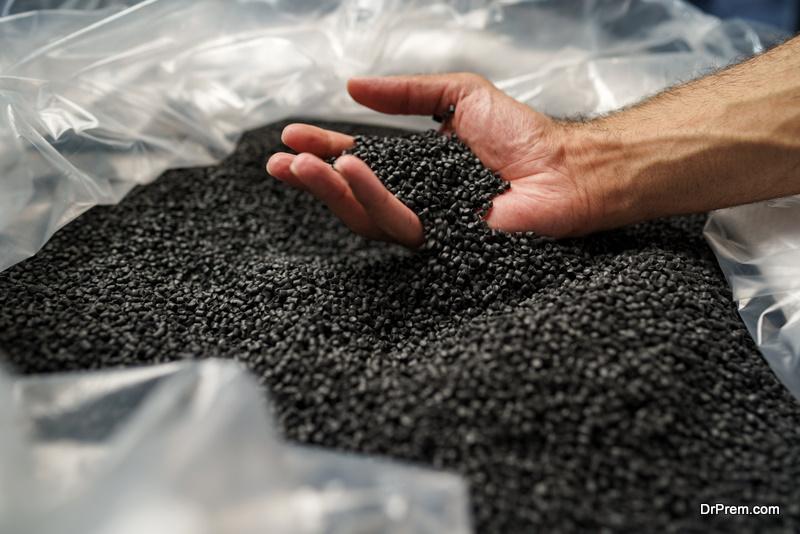Every year, millions of tons of plastic waste end up in oceans, landfills, and natural environments, causing irreparable harm to marine life and disrupting delicate ecosystems.
Biodegradable polymers provide a beacon of hope in this bleak scenario. These are materials designed to decompose naturally after serving their purpose, reducing the environmental burden significantly.
This article delves into the science, benefits, and potential of biodegradable polymers, showcasing how they could pave the way for a more sustainable, plastic-free future.
What Are Biodegradable Polymers?
Biodegradable polymers are a class of polymers that can be broken down into environmentally benign substances with the help of microorganisms such as bacteria and fungi.
Depending on where this degradation occurs, the outcomes can differ. In oxygen-rich (aerobic) environments, the primary by-products of this breakdown are carbon dioxide, water, and new biomass. However, in environments lacking oxygen (anaerobic), methane—a potent greenhouse gas—can be produced alongside water and biomass.
The concept behind biodegradable polymers is to create materials that, after serving their intended purpose, can decompose and reintegrate into the natural environment, reducing the accumulation of persistent waste.
Types of Biodegradable Polymers
Biodegradable polymers, in their diverse glory, find their roots in both the bounty of nature and the prowess of human innovation.
· Natural Biodegradable Polymers
Nature’s own laboratories have been producing biodegradable polymers long before humans recognized their potential. Rooted deep within Earth’s flora and fauna, natural biodegradable polymers such as cellulose, proteins, and starches are nature’s way of ensuring sustainability.
These biomolecules, a key part of our planet’s intricate life cycle, have evolved to serve various functions, from providing structural support in plants (cellulose) to essential metabolic roles in organisms (proteins).
Their inherent degradability means that once they have served their purpose, they can seamlessly return to the Earth, completing the circle of life. Their decomposition, often aided by microbes and environmental factors, leaves minimal to no footprint, embodying nature’s perfect design of creation and reintegration.
· Synthetic Biodegradable Polymers
Venturing into the realm of synthetics unveils a world where human innovation seeks to mimic and, at times, enhance nature’s designs. Synthetic biodegradable polymers, like Polylactic Acid (PLA) and Polyvinyl Alcohol (PVA), represent the forefront of this endeavor.
PVA suppliers, in particular, have emerged as pivotal figures in this landscape. Their efforts, fueled by both market demand and environmental responsibility, have helped bridge the gap between traditional plastics and eco-friendly alternatives.
By pushing the boundaries of polymer science, they’ve not only expanded the range of applications for these materials but also championed a new age where synthetic doesn’t equate to environmentally detrimental.
Benefits Over Conventional Plastics
Biodegradable polymers naturally degrade into harmless substances, offering a significant reduction in persistent waste and curtailing soil and water pollution.
Because they are produced with lower energy demands, many biodegradable polymers are derived from renewable sources, marking a shift away from the global dependence on fossil fuels. Furthermore, their decomposition processes typically generate fewer harmful greenhouse gases, making them a preferable choice in the battle against climate change.
On the ecological front, the rapid decomposition of these polymers reduces threats to marine and terrestrial wildlife, addressing concerns of ingestion and entanglement. Their ability to be converted into nutrient-rich compost further elevates their environmental credentials.
Meanwhile, from an economic perspective, the growing interest in biodegradable polymers has catalyzed market opportunities and research innovations. As consumer awareness and demand for sustainable products rise, these polymers stand out, signifying the evolving synergy between industrial progress and environmental responsibility.
Applications of Biodegradable Polymers
Biodegradable polymers, owing to their unique properties of durability coupled with degradability, have found applications spanning multiple sectors.
Medical and pharmaceutical industries have been particularly keen on harnessing their potential. They are employed in the creation of sutures that naturally dissolve over time, negating the need for secondary surgeries to remove them.
Drug delivery systems also benefit from these polymers; they can be fashioned into controlled-release tablets or capsules, ensuring that medication is delivered to the body at a steady, optimal rate.
Additionally, in tissue engineering, biodegradable polymers provide scaffolds that, after serving their purpose, degrade without leaving any residue, paving the way for the body’s natural tissues to take over.
Outside the medical realm, these polymers are making their mark in the environmental sphere. In agriculture, they are crafted into mulch films that decompose after improving soil health and crop yield, eliminating the need for collection and disposal.
The packaging industry, faced with immense pressure due to environmental concerns, is transitioning towards biodegradable polymer-based solutions – from food containers to shopping bags. Even in the realm of electronics, these polymers are beginning to be explored for short-lifespan devices, ensuring minimal environmental impact post-use.
Across these diverse applications, biodegradable polymers signify a paradigm shift towards products that serve their purpose and then graciously bow out, leaving minimal footprints behind.
Conclusion
The emergence of biodegradable polymers offers a respite and a revolution. These materials, artfully crafted by nature’s design or human ingenuity, represent more than just an alternative to traditional plastics; they symbolize a renewed commitment to harmonizing technological advancement with ecological responsibility.
From medical innovations to sustainable packaging, these polymers underscore the endless possibilities of a world where utility doesn’t come at the expense of the environment.
Undeniably, biodegradable polymers forge a path that aligns industrial aspirations with a vision of a greener, more sustainable future.
Article Submitted By Community Writer


